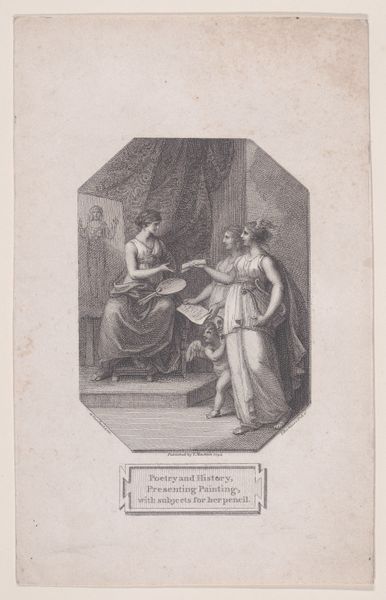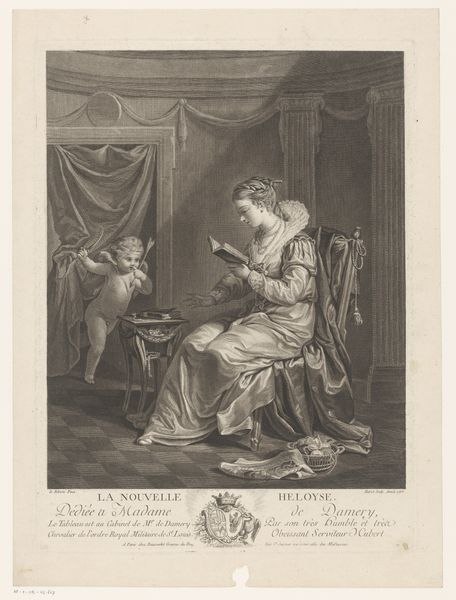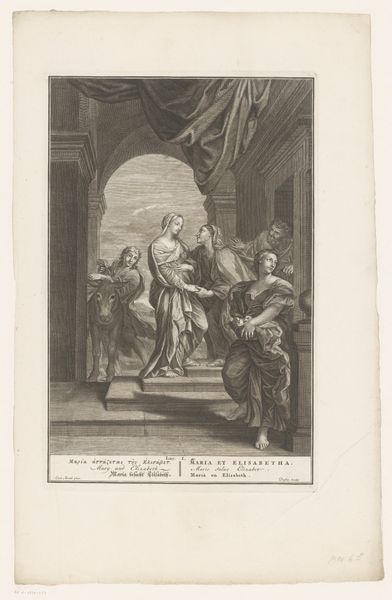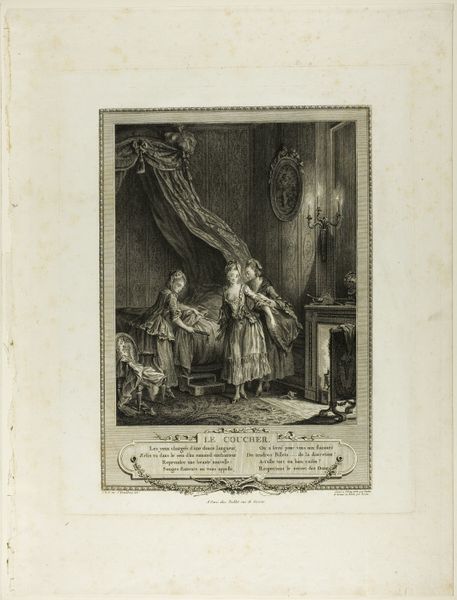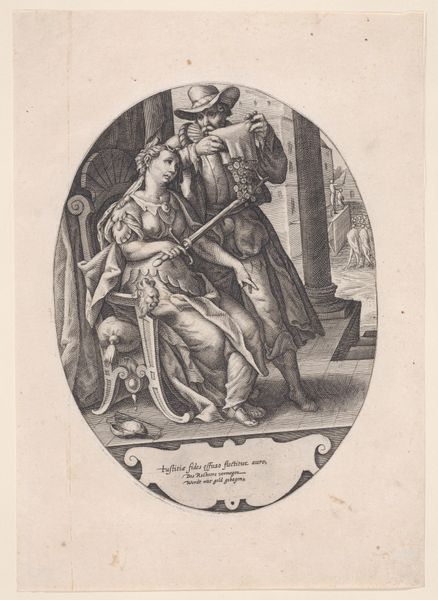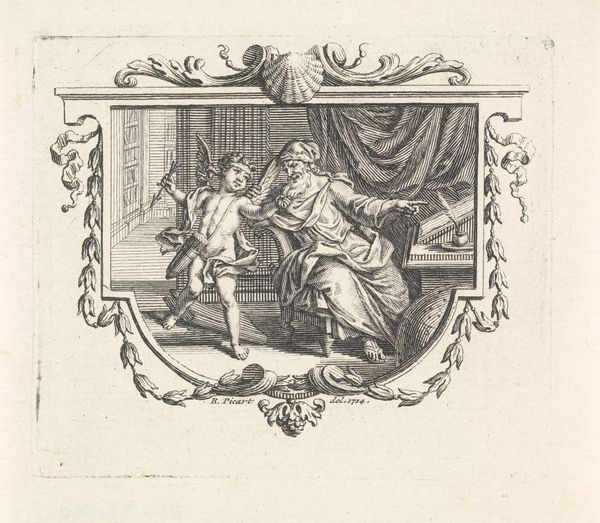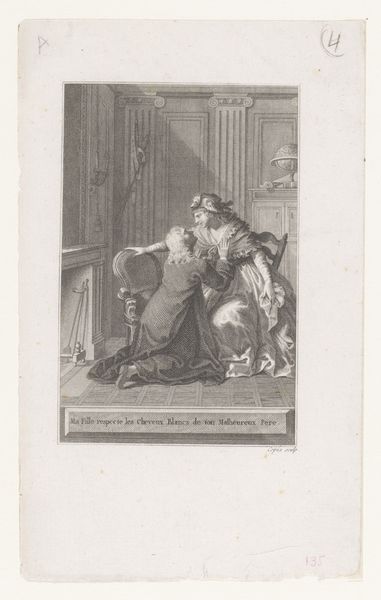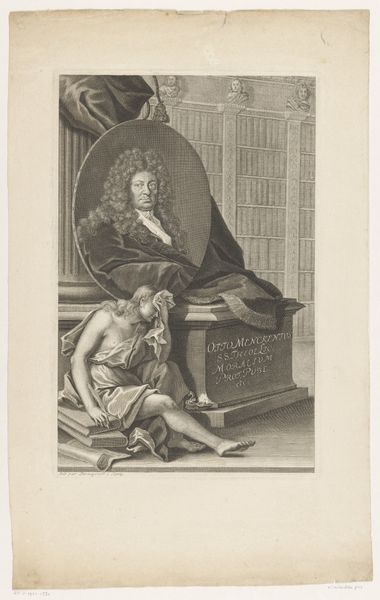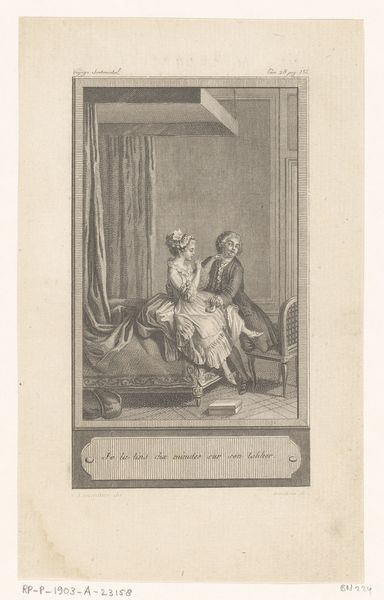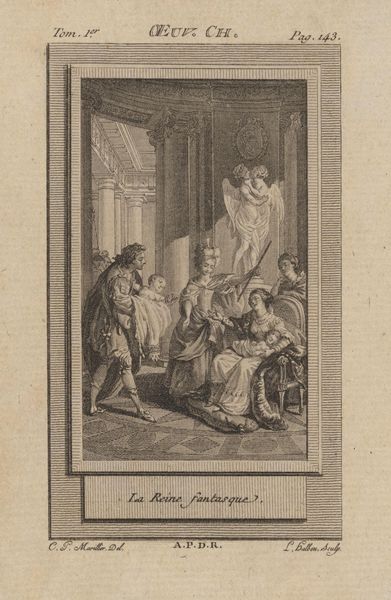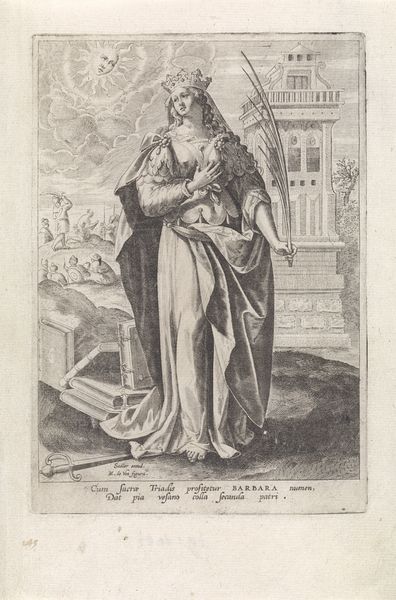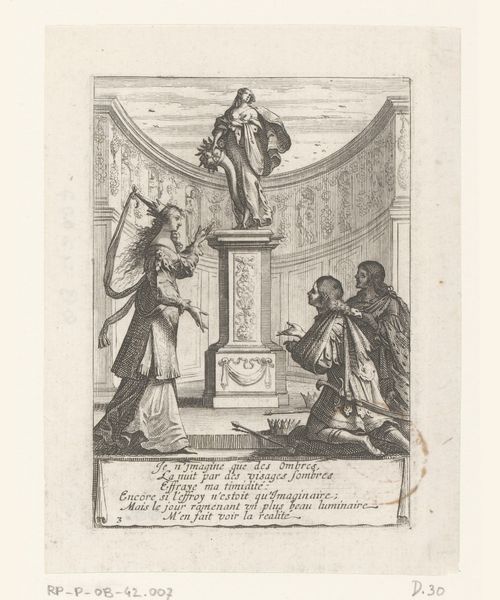
drawing, print, engraving
#
portrait
#
drawing
#
allegory
# print
#
old engraving style
#
mannerism
#
figuration
#
form
#
line
#
history-painting
#
engraving
Dimensions: Height: 8 3/4 in. (22.3 cm) Width: 6 9/16 in. (16.6 cm)
Copyright: Public Domain
Curator: This is "Allegory of Pride," an engraving likely created between 1590 and 1630 by Lambert Cornelisz. Editor: Immediately, the detail in this print is striking, particularly in the fabrics and the elaborate headdress. There's an air of vanity, certainly. Curator: Absolutely. It's rich in symbolism, and considering the printmaking process is key. Look at the labor involved in creating these intricate lines through engraving – a real skill! The woman is perched atop a globe, foot resting casually on a cross, gazing at her reflection in a mirror, all markers of the sin of pride. Editor: Yes, but more than just individual vanity, I see commentary on social hierarchies. The positioning on the globe, the opulent clothing, suggests a critique of power structures of the time. Were these engravings popular, and how were they received? Curator: These types of prints were often circulated to convey moral messages. Engravings allowed for relatively inexpensive reproductions, thus widening the audience. The materiality itself aided the proliferation of the message, highlighting the dangerous allure of wealth and status. Editor: I agree, though it's crucial to acknowledge that these images also played a role in solidifying those power structures by reinforcing ideas about sin and virtue. The church was a major patron. I'm wondering about the historical context, and whether viewers were critical of that aspect. Curator: A complex point! On one hand, the engraving technique itself, readily reproducible and thus 'democratic', challenged unique artworks of the elite, whereas the image reinforces hierarchy. So there’s a tension between the means of production and its social purpose. Editor: Exactly, it's in this tension, in the convergence of accessible materials and moralizing messaging, that the true historical value of Cornelisz’s work resides. Curator: Thinking about all this has only intensified my appreciation for how method and substance operate together. Editor: Agreed. The power of an image often comes from not just what it depicts, but also how it's made and received within the society it inhabits.
Comments
No comments
Be the first to comment and join the conversation on the ultimate creative platform.
